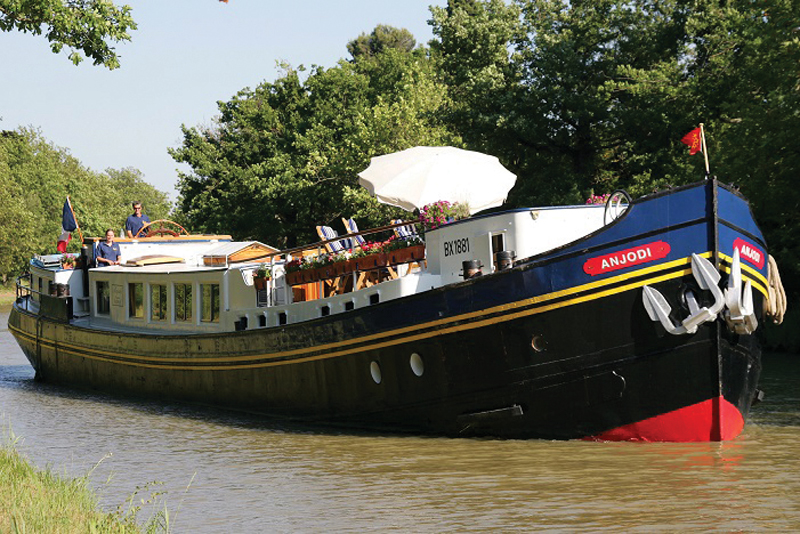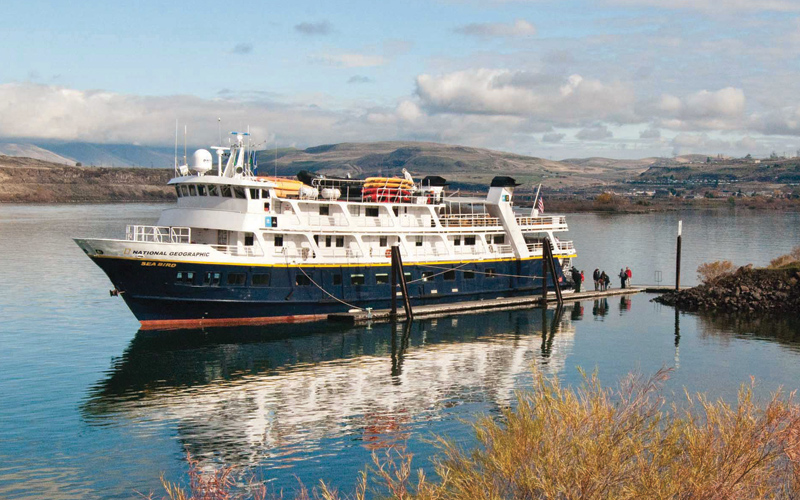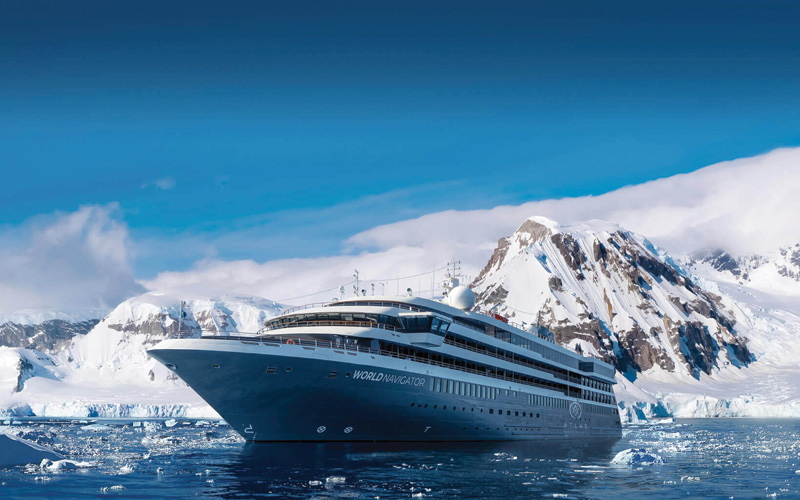Barge Cruises: Slow and Steady and Delicious
Slow cruising, aka hotel barging,

is showing double-digit growth rates according to one industry source. That’s not surprising since cruising in general continues to grow rapidly, with cruise repeaters seeking new and more immersive experiences.
One estimate puts the number of barges currently operating at about 70. While most cruise the canals of France, they also can be found on the waterways of Holland, Belgium, Italy, Germany, Scotland, England and Ireland. Barge season starts in late March and runs through the end of October.
Taking a barge cruise along one of Europe’s canals can be a great alternative to cruising on oceans and rivers-for the client who understands the unique nature of the product and the ways that it differs from ocean and river cruises.
One of the big differences is size (and price). Whereas a river boat may carry a hundred or so passengers, hotel barges typically accommodate anywhere from four to a dozen or so passengers, though some of the newer vessels carry as many as 24 or more.
Most barges have fewer frills and amenities than their larger cousins; they typically have two decks (occasionally three), a combination dining room and lounge and smaller staterooms and bathrooms. These may seem starkly simple to clients who are accustomed to the space and amenities, as well as elevators found on ocean (and some river) ships. (And forget about room service on barges-they just aren’t set up to provide that.) Some barges have whirlpool tubs, small pools and exercise equipment.
Yet the cost may run from $350 per person per day to more than $1,000 per person per day. Barges are also available for private charter, which can cost between $15,000 to more than $60,000 per week.
A barge normally cruises within one region of one country (most often France) while a river cruiser can travel through several countries and on several rivers during one sailing.
Another major difference between a river cruise and a barge cruise is the distance covered. A six-day barge cruise may travel 25 miles or so, while river cruisers typically cover a few hundred miles.
As transiting the locks along the canals can be time-consuming, passengers sometimes prefer to walk or bicycle along the canals’ banks – even outpacing the barge. This isn’t necessarily a negative on a “slow” cruise, for part of the daily “entertainment” is watching the captain navigate the 200 locks on the various canals each day, skillfully steering the barge within spaces that may be only inches wider than the barge as it is raised and lowered, from between a couple hundred feet to almost 1,000 feet above sea level. If the lock keeper is having his lunch or mid-day rest when a barge arrives, everything stops until he or she emerges from the home alongside the canal, often with a dog, to set the cruise in motion once more.
The waiting doesn’t matter for fans of barge cruises; for them, the cruise is for relaxing, reading, sipping something delicious or just taking in the scenery: verdant cultivated fields, lush vineyards, grazing cows, occasionally a picnicking family who waves while passengers snap their pictures. Dedicated walkers can easily disembark and catch up with the barge at the next stop; cyclists may take one of the onboard bikes and explore on their own.
A plus on barge cruises is the level of service, as crew members often outnumber the passengers. Another plus for those who like to socialize: with so few fellow passengers, it’s possible to really get to know people and to actually forge friendships. (This could be a minus for clients who are not very social in nature.)
For clients who love good food and wine, a barge cruise is the hands-down winner. With so few passengers, the barge chef not only creates in-season menus based on the destination, he or she also considers the special needs and preferences of the passengers. Many foods, like breads, cheeses or eggs are sourced locally, further elevating the dining experience.
On a barge cruise I took through Burgundy, breakfast included truly superior baguettes and croissants, delivered warm each morning by a local baker. Lunch and dinner were multi-course feasts, with a change of excellent wines accompanying each course. While our chef was always ready to prepare a vegetarian or other special-requirement entrée, I reveled in the parade of such French classics as rack of lamb, seared foie gras, escargots, duck confit, ham en croute with coarse grain mustard and Chablis sauce, coq au vin, pan-fried duck breast and filet of Charolais beef with mushroom sauce.
As this was France, desserts were always worth the calories, though it was the selection of cheeses, some 20 in all, offered at lunch and dinner (and accompanied by wine) that had passengers cheering.
What I especially enjoyed about all the gourmet dining was that it was not necessary to “dress up” to enjoy it. Jeans and comfortable clothes were fine most of the time, though some passengers chose slightly dressier attire in the evening.
In between all the meals and the pre-dinner cocktail hour, we were free to sample the premium liquors and wines offered at the open bar in the lounge.
A valuable component of the superb dining is the opportunity to learn about food ingredients and recipes-and the wines offered in the area. (In France, some passengers end up buying shipments of the wines sampled, as many are not sold in the U.S.)
Most barge trips include daily excursions by minivan to nearby points of interest, such as medieval castles, vineyards (for wine tastings). Visits with local artisans or food producers may include dining with locals at colorful bistros or top-tier restaurants. One of the excursions on my tour was the trip to the market in Dijon of mustard fame. Fellow passengers loved the excursion, which provided the opportunity to taste and buy various mustards, as well as some French luxury goods (Longchamps, among others).
While watching the passing scenery and learning about life in the small towns and villages along the canals is an integral and unique part of the barging experience, other activities are offered on many itineraries-and are usually add-ons to the base price. Typical offerings are hot-air ballooning, horseback riding, specialty guided tours, tennis and golf.
Typically included in the base price are: drinks, fine wine (occasionally champagne), gourmet cuisine, pickup and drop-off from local airports, train stations and hotels, shore excursions and all entrance fees to places included in the cruise package. Complimentary bicycles are generally available for use
on shore.
For more details about barge cruise itineraries, cruise lines and ships, see the expanded article at www.jaxfaxmagazine.com/tag/Cruise-News.html




